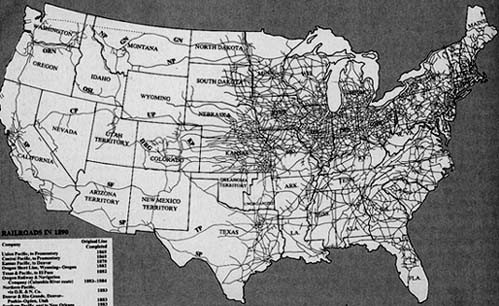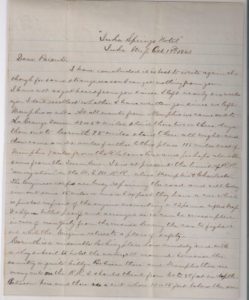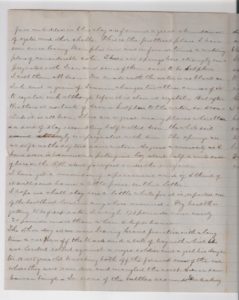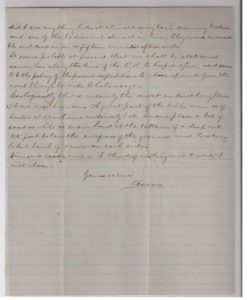Railroads
History of Railroads
Transportation was a major problem facing early settlers in Texas. As late as 1850 the settled area of the state was largely confined to the river bottoms of East and South Texas and along the Gulf Coast. Although steamboat navigation was common on the lower stretches of a number of such rivers as the Rio Grande, Brazos, and Trinity, Texas rivers were not deep enough for dependable year-round transportation. Roads were either poor or nonexistent and virtually impassable during wet weather. Ox carts hauling three bales of cotton could only travel a few miles a day and the cost of wagon transport was twenty cents per ton mile. Many proposals to improve internal transportation were both considered and attempted during the period of the Republic of Texas and early statehood. These included river improvements, canals, and plank roads in addition to railroads. However, it was the railroads that made the development of Texas possible, and for many years railroad extension and economic growth paralleled each other.
Several companies operated for relatively short periods of time, creating major changes and improvements in travel and transportation in Texas. A writer to the Houston Tri-Weekly Telegraph recalled a trip by stage from Houston to the Hockley area in December 1854 following ten days of rain. The thirty-five mile trip took nearly 1½ days and included an overnight stop. In May 1857 the writer made a similar trip aboard the Houston and Texas Central in one hour and forty minutes. In December of the same year the Telegraph stated that although there was high water in the Brazos, no boats had been reported on the river as the railroads had already handled all of the business. When State Engineer William Fields inspected the first five miles of the San Antonio and Mexican Gulf Railroad in February 1858, he reported that trains carrying passengers and freight operated two or four times a day over the short section extending from Port Lavaca. The terminal was a point on the prairie distant from any settlement or public highway. However, numerous teamsters sought out the terminal to transship their goods to or from the railroad.
There was insufficient local capital in Texas to finance the early railroads, and eastern and foreign capitalists were hesitant about investing in a frontier state. Incentives were necessary and took three major forms. Between 1850 and 1876, when the practice was prohibited by the Constitution, individual cities and counties issued about $2.4 million in bonds to aid railroad construction. The state, however, provided the major incentives in the form of land grants and loans. Six of the antebellum railroads borrowed $1,816,500 from the Special School Fund at the rate of $6,000 per mile of track.
Most of the Texas railroads did not suffer the depredations inflicted elsewhere in the South, all were in bad physical condition at the close of hostilities. Four years of constant use without materials or manpower for repairs had taken their toll. The Texas and New Orleans was forced to shut down between Beaumont and Orange. In addition, the rails of the Eastern Texas between Beaumont and Sabine Pass had been removed to be used for fortifications and other military needs. General John B. Magruder ordered the destruction of the San Antonio and Mexican Gulf to prevent its falling into the hands of enemy forces. The Southern Pacific Railroad Company (later a part of the Texas and Pacific and not related to the present Southern Pacific) had been required to remove part of its line between Marshall and Swanson’s Landing on Caddo Lake and to relay the rails to connect with the Vicksburg, Shreveport and Texas Railway Company near the Louisiana line, thus forming a route between Marshall and Shreveport, Louisiana. Late in the war one short line was constructed in Houston when the Galveston and Houston Junction Railroad built a bridge across Buffalo Bayou, connecting the Galveston, Houston and Henderson Railroad Company with the Houston and Texas Central.
Although it was the decade of the 1870s before any significant new mileage was constructed in Texas, the Houston and Texas Central was able to resume construction in 1867. The company built steadily northward, reaching Corsicana in 1871, Dallas in 1872, and the Red River in 1873. At the same time, the company, having acquired the Washington County, began work on its Western Division, reaching Austin on Christmas Day in 1871. Meanwhile, the Missouri, Kansas and Texas Railway Company reached Denison from the north on December 24, 1872, and with the completion of the Houston and Texas Central to that point the following year, the Texas railroad system was finally connected to the nationwide network. The San Antonio and Mexican Gulf was also rebuilt during the late 1860s by the occupying military forces.
Railroads in 1864

Letter
This transcription was copied from the original document and is representative of all spelling, punctuation, and grammar as written by the creator. The original document is housed in the Pearce Civil War Collection, Pearce Collections Museum, Navarro College, Corsicana, Texas. https://www.PearceMuseum.com
“Iuka Springs Hotel”
Iuka Miss Oct. 18th 1863
Dear Parents-
I have concluded it is best to write again although for some strange reason I can get nothing from you – I have not as yet heard from you since I left nearly six weeks ago. I don’t recollect whether I have written you since we left Memphis or not – At all events from Memphis we came out to La Grange Tenn – 49 or 50 miles staid there two or three days then out to Corinth 95 miles staid there all night and then came on 20 miles further to this place 115 miles east of Memphis 7 miles from the Alabama line and perhaps about the same from the Tenn. line – It is at present the limit of R.R. ” navigation” on the U.S.M. R.R. alias “Memphis & Charleston” The Engineer corps are busy repairing the road and will today run out some 15 miles or more I expect they have a car which is pushed in front of the engine mounting a 12 pound rifled brass Dahlgren bullet proof and arranged so it can be uncoupled in case of necessity from the inside leaving the car to fight it out while the Engine retires to a place of safety –…….
……The other day we were leaving Grand Junction with a long train a car ran off the track and a bale of hay with which it was loaded rolled against a negro soldier and a girl his daughter 14 or 15 years old knocking both off the forward end of the car where they were run over and mangled the worst I ever saw human beings – In none of the battles around Vicksburg did I see anything like it almost every bone seeming broken and one of the bodies cut almost in two – They were insensible and died in ten or fifteen minutes afterwards –
It seems probable at present that we shall be stationed somewhere along the line of the R.R. to keep it open – as it seems to be the policy of the present expedition to clear up and open the road through towards Chattanooga -……
……Dinner is ready and as I think of nothing more to write I will close –
Yours as ever
Anson

Clark Letter, page 1

Clark Letter, page 2

Clark Letter, page 3

